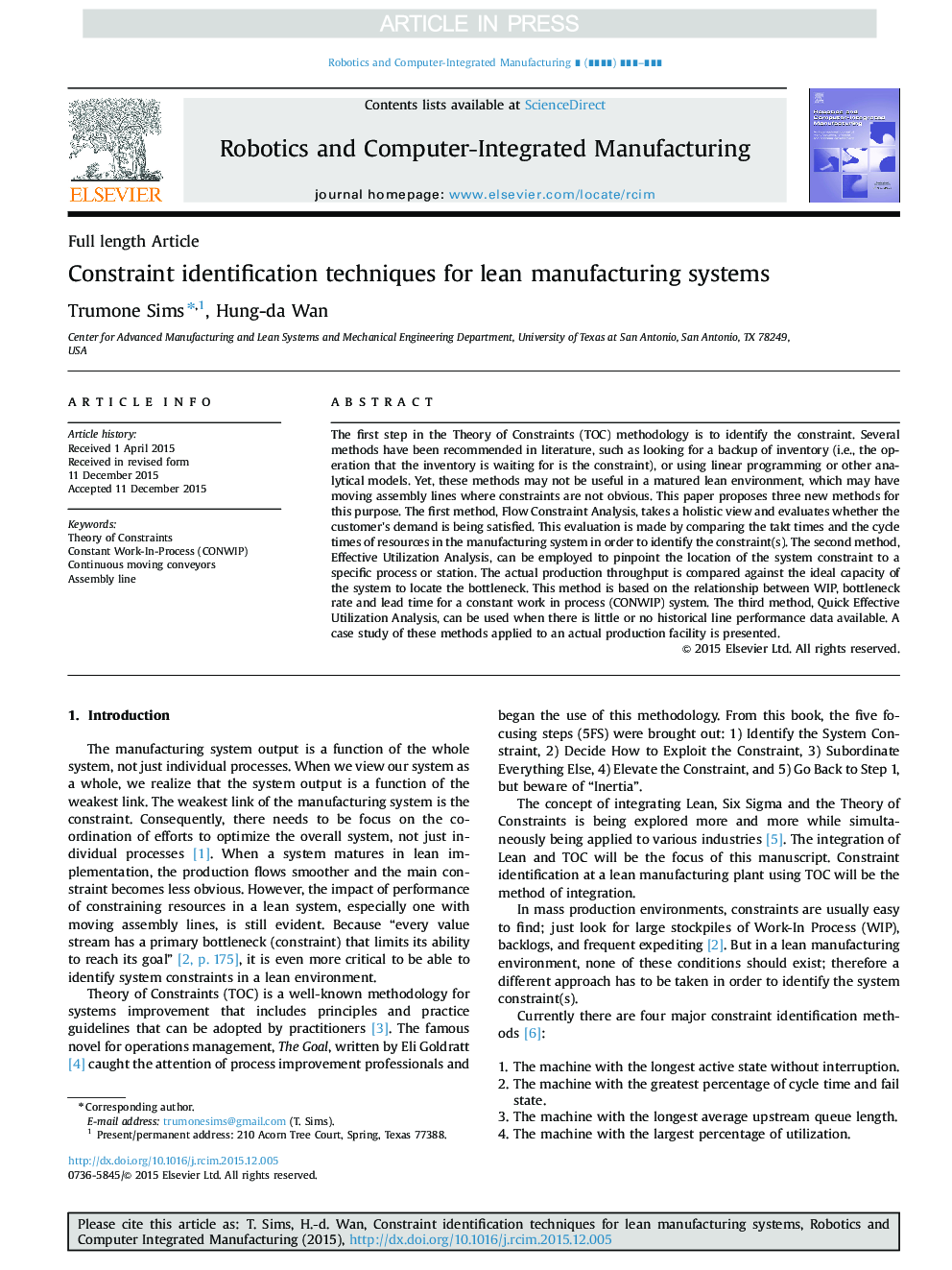| Article ID | Journal | Published Year | Pages | File Type |
|---|---|---|---|---|
| 4949053 | Robotics and Computer-Integrated Manufacturing | 2017 | 9 Pages |
Abstract
The first step in the Theory of Constraints (TOC) methodology is to identify the constraint. Several methods have been recommended in literature, such as looking for a backup of inventory (i.e., the operation that the inventory is waiting for is the constraint), or using linear programming or other analytical models. Yet, these methods may not be useful in a matured lean environment, which may have moving assembly lines where constraints are not obvious. This paper proposes three new methods for this purpose. The first method, Flow Constraint Analysis, takes a holistic view and evaluates whether the customer's demand is being satisfied. This evaluation is made by comparing the takt times and the cycle times of resources in the manufacturing system in order to identify the constraint(s). The second method, Effective Utilization Analysis, can be employed to pinpoint the location of the system constraint to a specific process or station. The actual production throughput is compared against the ideal capacity of the system to locate the bottleneck. This method is based on the relationship between WIP, bottleneck rate and lead time for a constant work in process (CONWIP) system. The third method, Quick Effective Utilization Analysis, can be used when there is little or no historical line performance data available. A case study of these methods applied to an actual production facility is presented.
Keywords
Related Topics
Physical Sciences and Engineering
Computer Science
Artificial Intelligence
Authors
Trumone Sims, Hung-da Wan,
